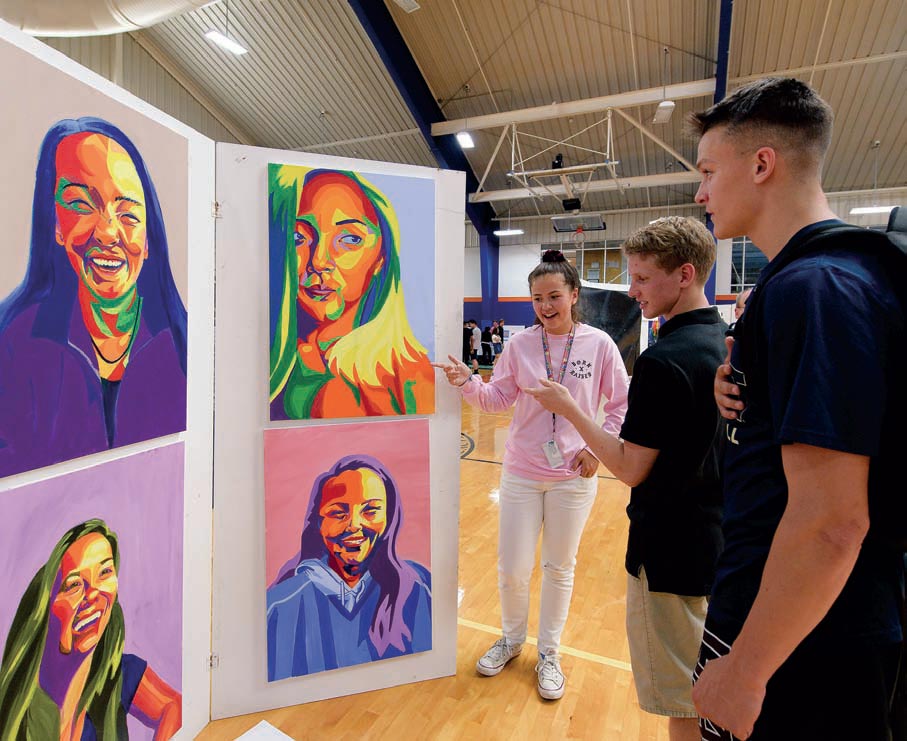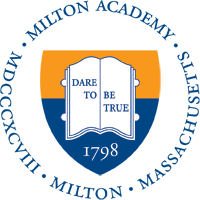Six Favorite Milton Traditions
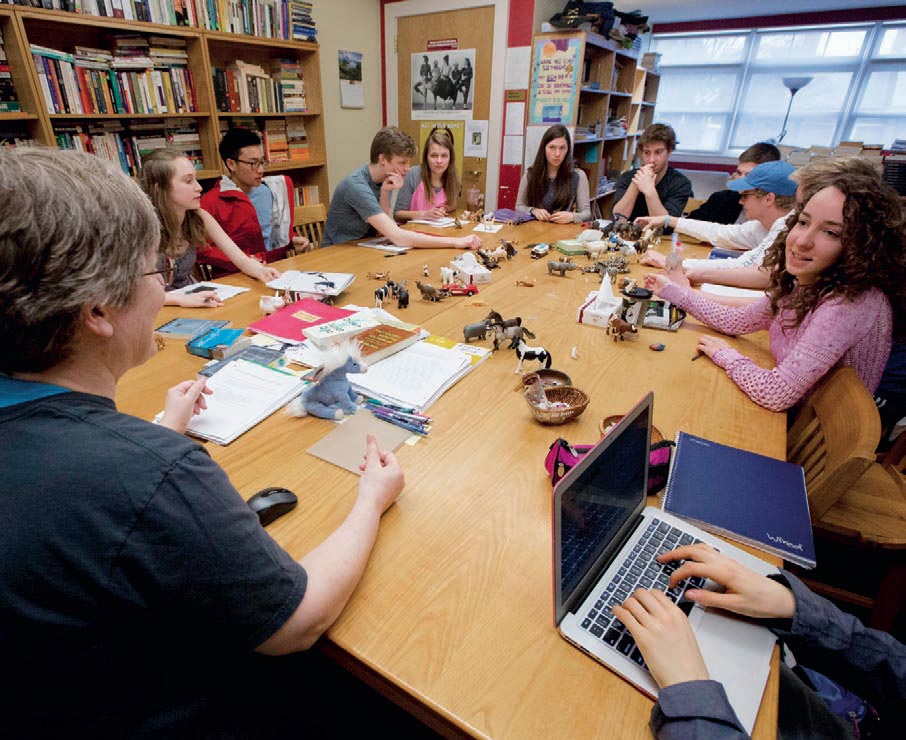
The Harkness Table
In English and history classes, learning stems from conversation around the Harkness table, focusing on discussions with your peers, not lectures from your teacher.
“I love the Harkness table. It’s very different from what I’d experienced in classrooms at my old school, which was more of a traditional setting. I think it creates a bond between the teacher and student, rather than having the teacher simply lecture to the student. It makes for more of a creative and engaging discussion.”
— Sophie Clivio
Beatnik Café
Live entertainment, for and by students, Beatnik Café is Milton’s own open-mic night. Magus/Mabus hosts the popular event several times each year. Launched by Colin Cheney ’96, Beatnik fills Straus Library. On couches and beanbag chairs, or dangling feet between the rails of the second-floor balcony, students watch classmates perform. Music of all kinds—classic guitar, rap, rock, hip-hop, acoustic—along with original poetry and improv comedy—round out the night’s performances.
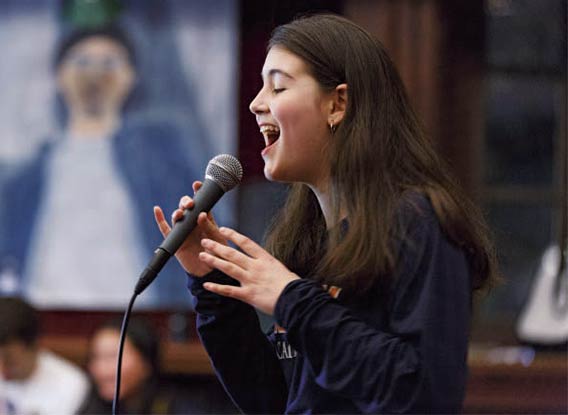
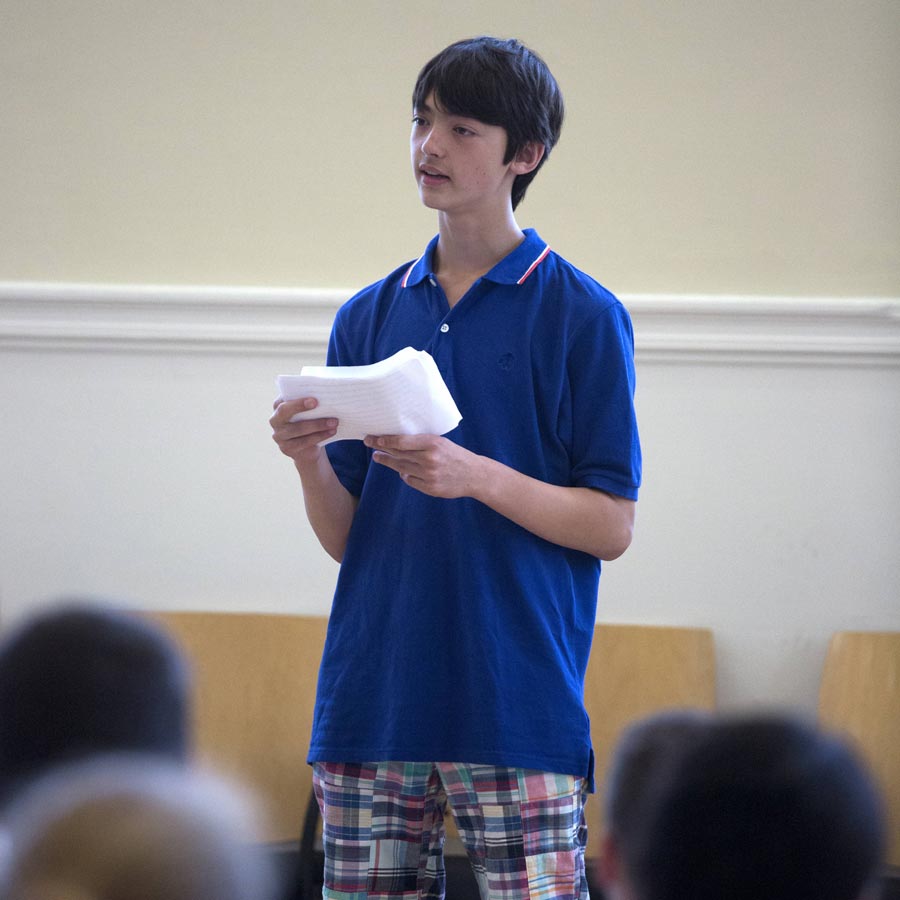
Class IV Talks
A rite of passage. A distinct memory for most alumni. Five- to seven-minutes on a subject you choose. Classmates vote on which talks they want to hear again at an annual “Best of” event in May. Topics range from being the oldest of eight children to China’s one-child policy, from hiking Mount Washington to breaking a Breaking Bad addiction.
“Class IV Talks are one of the most valuable things we do here,” says English faculty member Caroline Sabin ’86. “Putting students in front of their peers and asking them to talk about what is important to them creates breathtaking moments. We are sharing with each other, not just around academics, or abstractions, but around the ways in which we see our world.”
Milton-Nobles Weekend
Each athletic season culminates in the beloved Milton-Nobles Weekend. In the fall, the weekend kicks off with a massive pep rally. The jazz band plays, the step team performs, the dance team and the Mustang mascot dance, and Class I emcees rally students, decked out in blue and orange. The rivalry with Noble and Greenough School dates back to an 1886 football game, and it’s alive and well today.

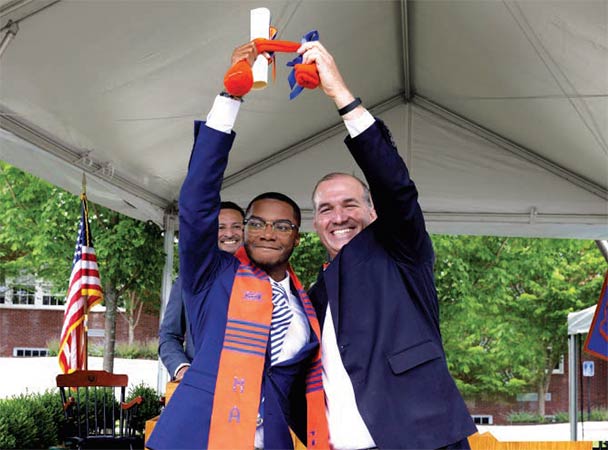
Sock of Quarters at Graduation
Commencement is full of tradition: the white dresses, the blue jackets, the bagpiper, and speakers chosen by the class are followed, finally, by diplomas, in random order. In 1986, then dean of students John Mackenzie decided that the last student called should receive a “prize” for waiting until the very end to receive his or her diploma. That prize was a Milton athletic sock, filled with dimes—one from each senior. Over the years (call it inflation), the dimes became quarters, and to this day, the final student leaves Milton not only with a diploma, but also with enough laundry money for the first few months of college.
Senior Projects
“Going on project” is a familiar Milton term; it refers to Class I students beginning their long-awaited Senior Project at the start of May. Senior Projects are a Milton tradition dating back to the 1960s, and they’ve evolved over time. The projects that seniors undertake today fit within four categories: scholarly or academic; community service; internships; and the arts. The procedural hoops to set up a project begin during early winter, when students who are interested submit their ideas and plans. They must recruit a member of the faculty or staff as a project advisor, and a committee of faculty decides whether the project meets certain criteria. Students’ projects take all forms—from choreographing traditional Indian dances, to shadowing an orthopedic surgeon, to tutoring ESL students, to developing an advanced fly-fishing manual.
